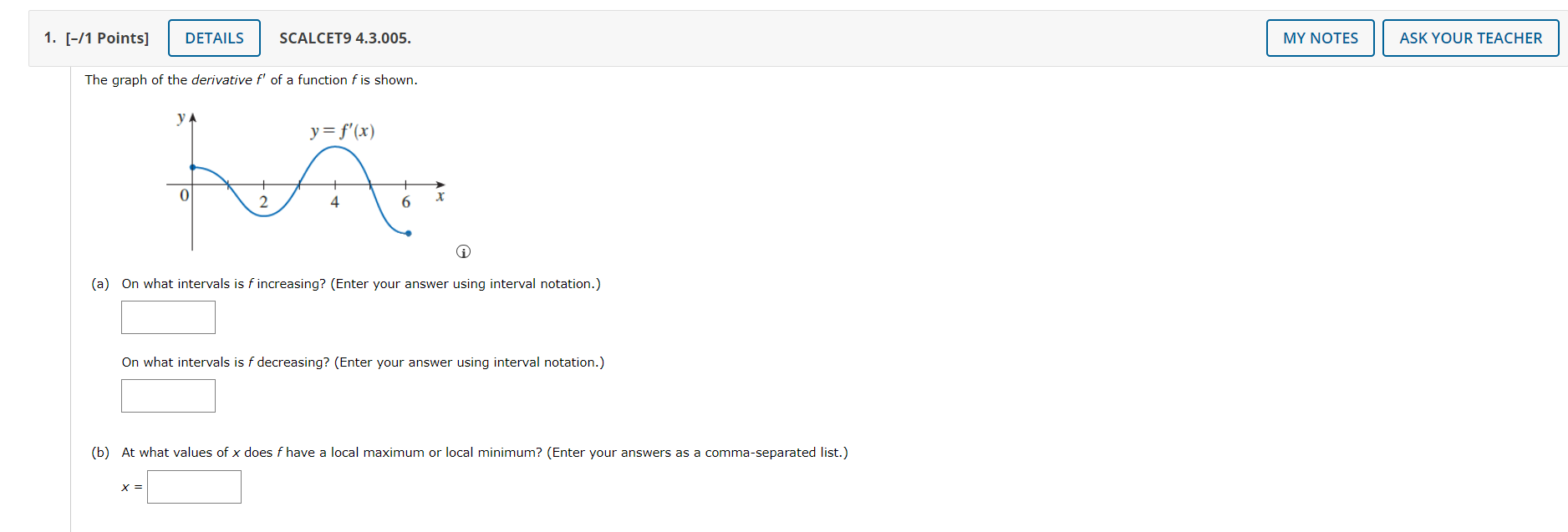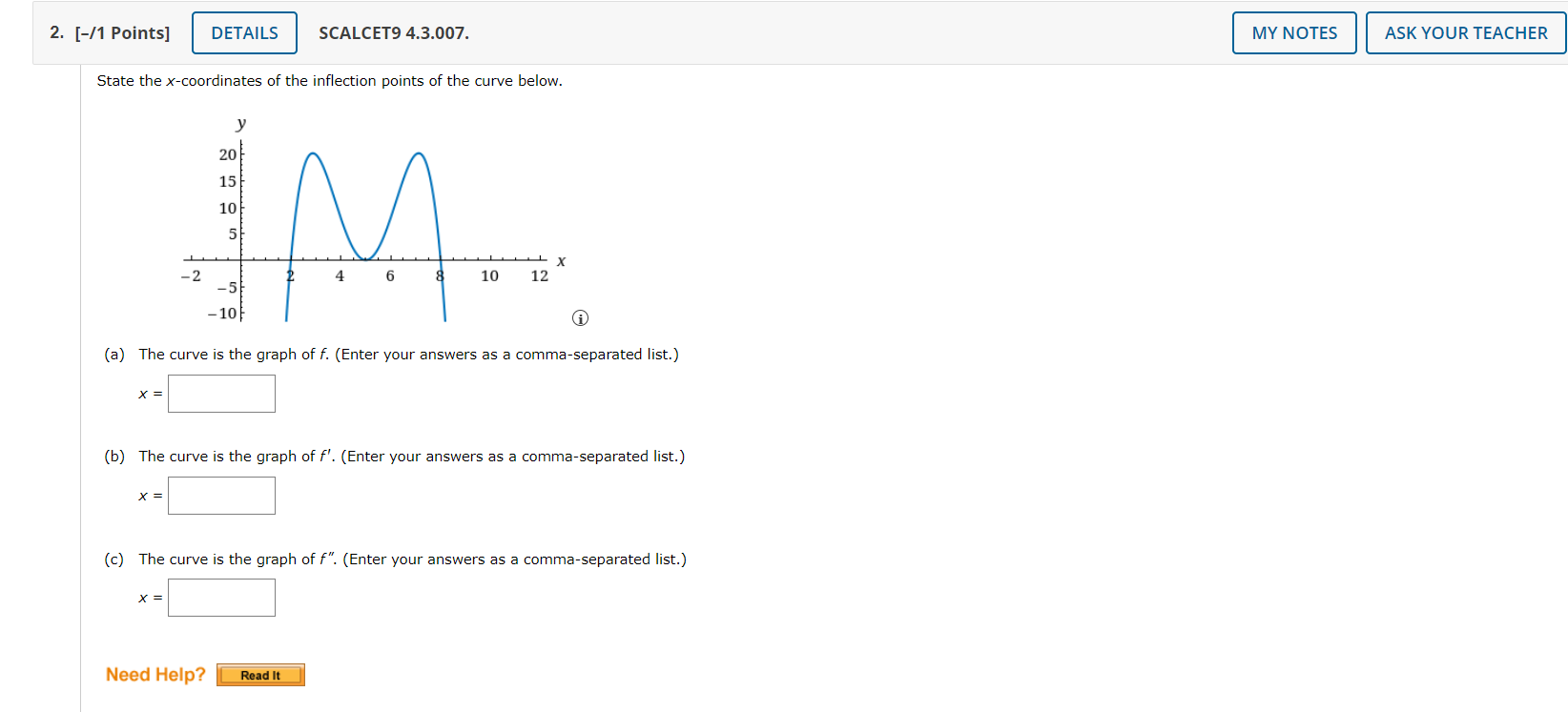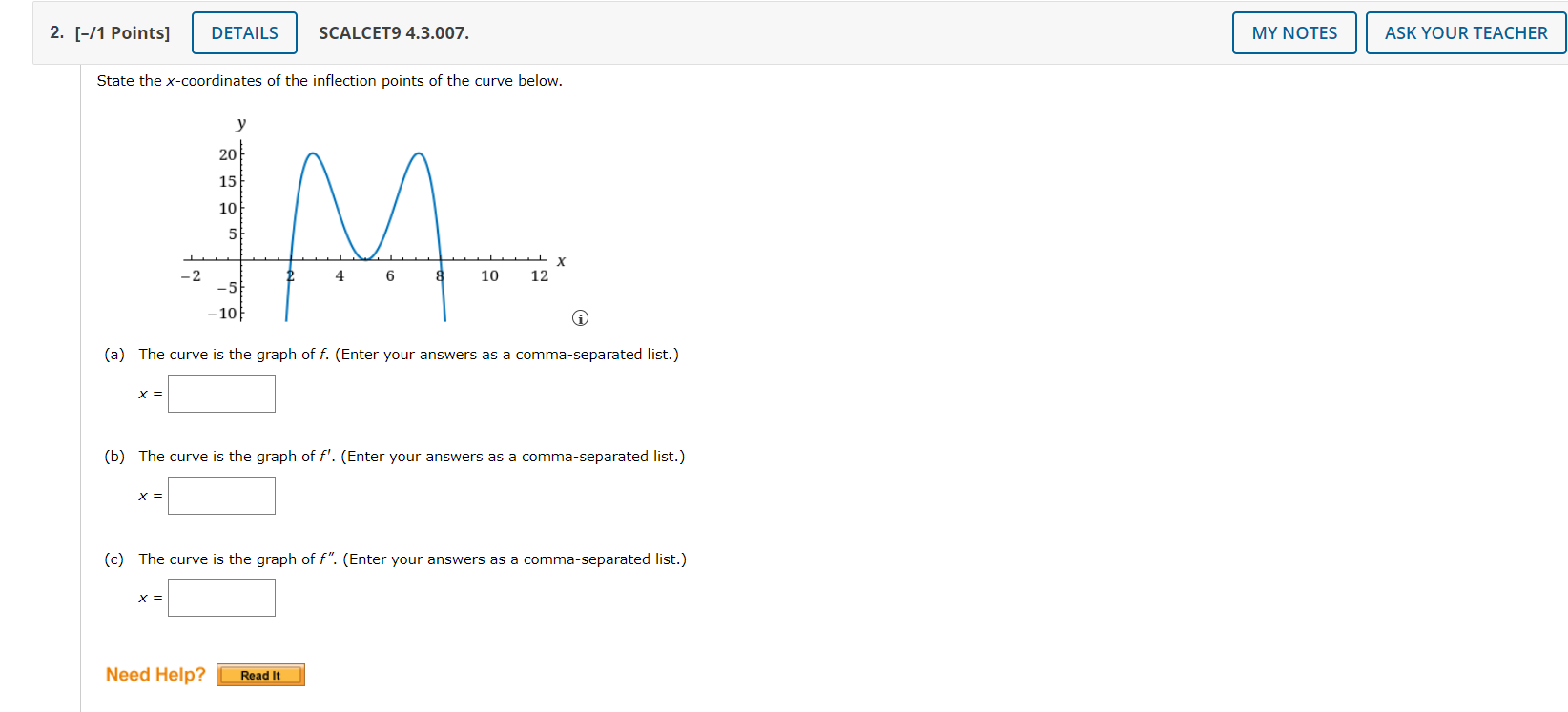Answered step by step
Verified Expert Solution
Question
1 Approved Answer
4.3 Homework - Derivatives, Shape of a Graph (Homework) 1. [-/1 Points] DETAILS SCALCET9 4.3.005. MY NOTES ASK YOUR TEACHER The graph of the derivative





4.3 Homework - Derivatives, Shape of a Graph (Homework)





Step by Step Solution
There are 3 Steps involved in it
Step: 1

Get Instant Access to Expert-Tailored Solutions
See step-by-step solutions with expert insights and AI powered tools for academic success
Step: 2

Step: 3

Ace Your Homework with AI
Get the answers you need in no time with our AI-driven, step-by-step assistance
Get Started


